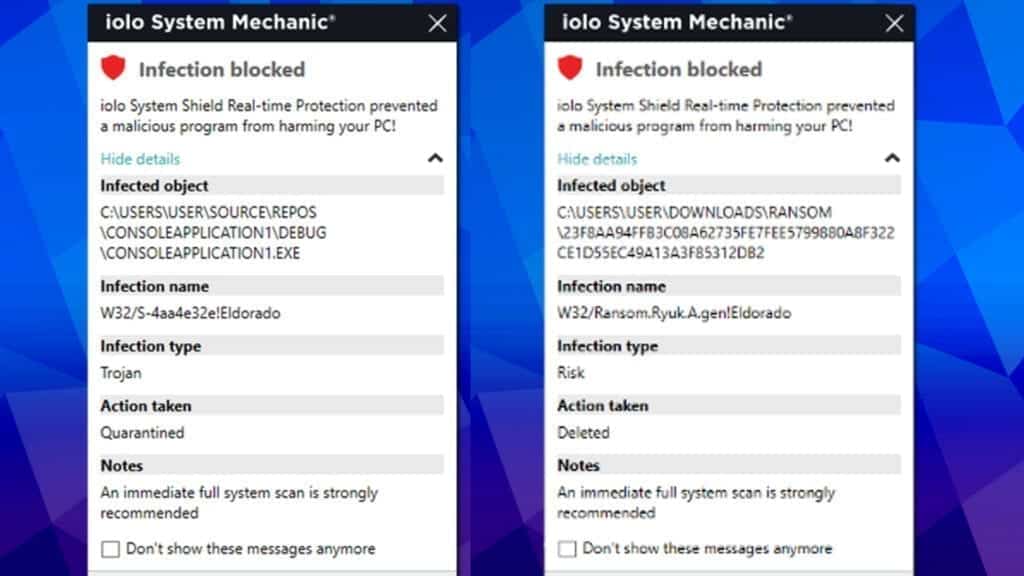

That’s a very dramatic dichotomy for what amounted to a recommendation to remove CCleaner Update from my start-up settings, which it flagged as unnecessary (and the community was 94% against this recommendation). System Mechanic flagged one start-up item as “unnecessary or dangerous”. Clicking on the number reveals the system recommendations, which can be reviewed for more detail or skipped.

My Surface Laptop 4 scan had no major issues but there were two recommendations.

After a few seconds, you’ll be greeted with a system status, including issues and recommendations. This tab of the software looks eerily familiar to the antivirus section, and you’re initially encouraged to run a system scan. Iolo System Mechanic Ultimate Defense’s main selling feature is system optimisation. While Google Chrome does a good job of blocking it anyway, when I bypassed those protections, the files still failed to download, which tells me System Mechanic Ultimate Defense was doing its job. This fake virus is a way to test antivirus. You should never use a real virus for antivirus testing, which is where the European Institute for Computer Antivirus Research (EICAR) dummy files stepped in to help. For context, my Surface Laptop 4 fans were pumping during the entire scan. Running an initial full system scan used up more Windows 11 resources than I was expecting, certainly in comparison to the minimal impact I’m used to from Windows Defender. I had to uninstall Spybot to even activate real-time antivirus threat protection, even though the free version of Spybot isn’t a substitute for active antivirus.

During my tests, the first hurdle was that Iolo System Mechanic Ultimate Defense didn’t play nice with Spybot – Search and Destroy. Iolo System Mechanic Ultimate Defense asks for Windows admin privileges whenever you try to access it.


 0 kommentar(er)
0 kommentar(er)
